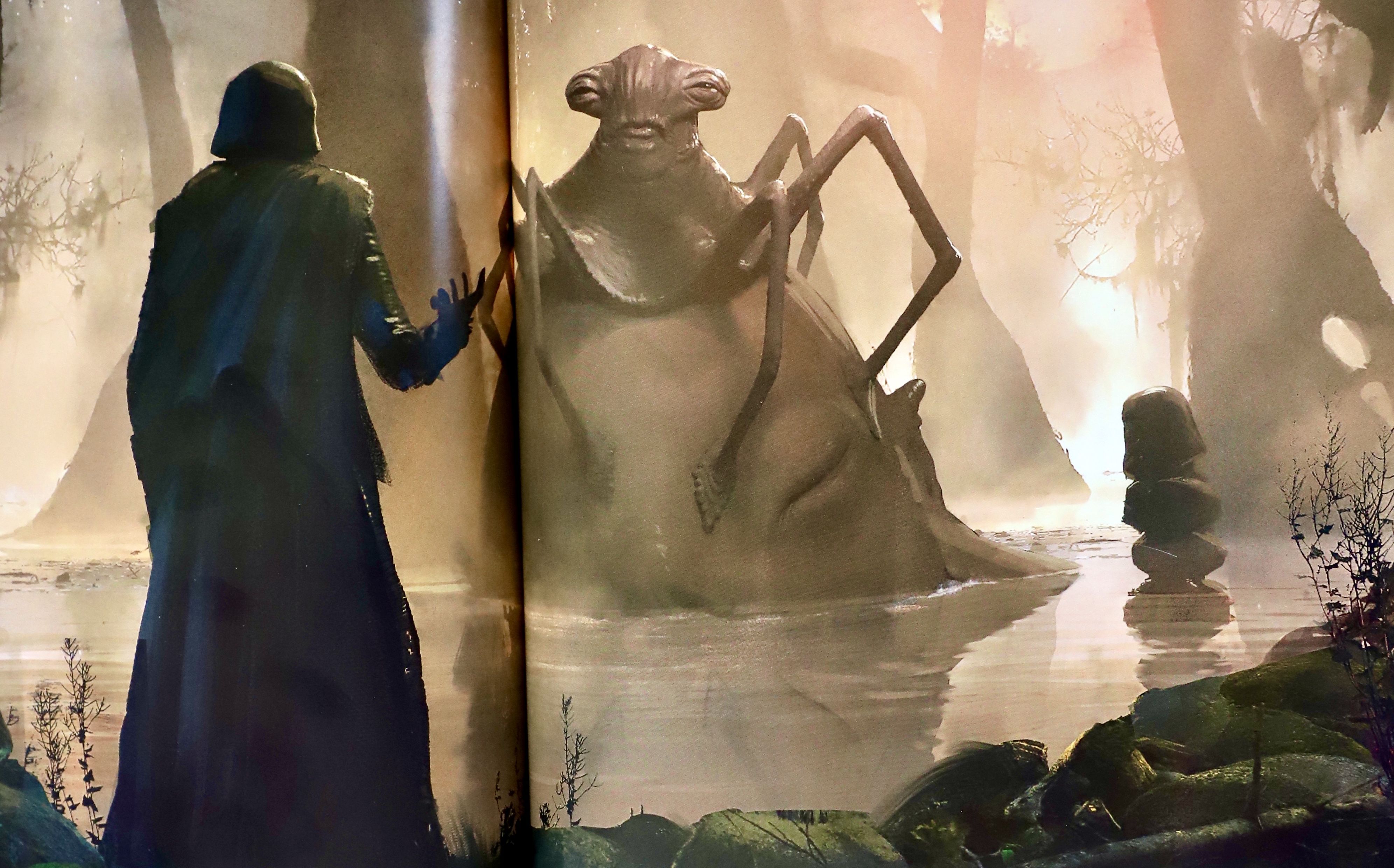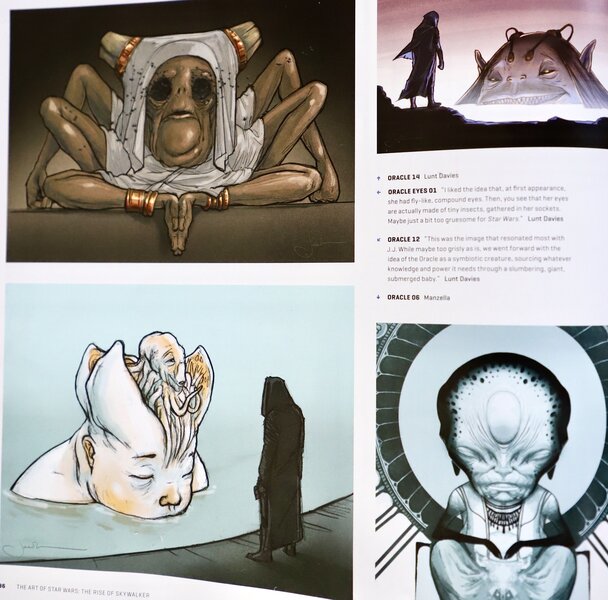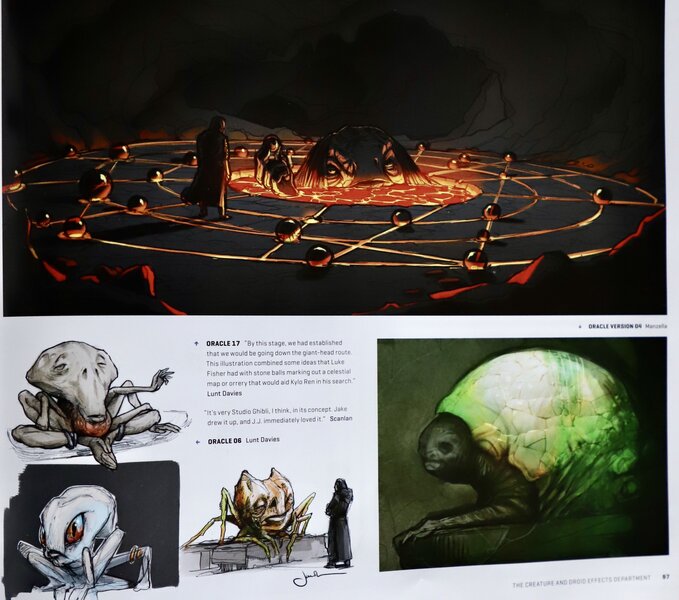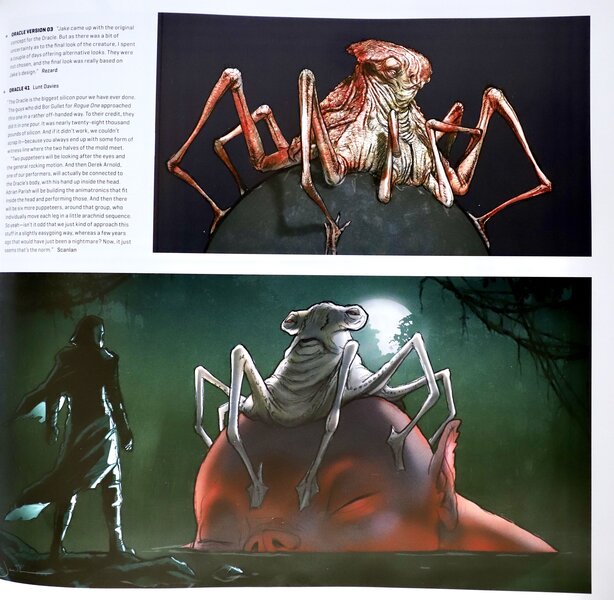Create a free profile to get unlimited access to exclusive videos, sweepstakes, and more!
The Rise of Skywalker art book reveals scrapped character idea for Miyazaki-esque 'Oracle'

The Star Wars universe is brimming with so much potential that really cool concepts for films and shows set within it must sometimes fall to the wayside, so as not to disrupt the story being told. Filled with an intriguing collection of unused plot elements, The Art of Star Wars: The Rise of Skywalker (on sale next week) is as much a testament to what could have been as it is an official record of what ended up on the screen.
"Anytime you see deleted-scene stuff or unused concepts [in the book], I try to put it in the appropriate place — chronologically through the film and by team," the book's author, Phil Szostak, tells SYFY WIRE. "Just kind of peppering it in there where it seems best suited as far as the plot of the movie goes."
One of the most awesome ideas that never made it into the final cut of Rise was the "Oracle," a wizened and inhuman alien creature that helps guide Adam Driver's Kylo Ren to the Sith planet Exegol. The art book describes the character as "a large puppeteered creature like Return of the Jedi's Jabba the Hutt." Put another way, this is the being who was rumored to be Palpatine's "Lovecraftian" Sith master, Tor Valum, in Colin Trevorrow and Derek Connolly's early Episode IX script.
Turns out the rumors were false on that front.
Several designs were drawn up for the Oracle, including one of a many-limbed alien with eyes made up of buzzing insects. Then you've got the sketch of a tentacled, symbiotic thing living inside of and deriving its knowledge/power from the head of a giant, sleeping baby. According to the book, director J.J. Abrams liked this "grisly" idea best and the final design wasn't too far off, as the Oracle transformed into a spider-legged monster sitting atop said baby dome in the middle of a volcanic swamp.
"As far as the design goes, the sky was really the limit. I think there’s always inclination for it to be a large creature of some sort. Apart from that, the designers were free to just come up with whatever they thought was interesting and cool and creepy," continues Szostak, who also serves as Lucasfilm's creative art manager. "I think the vibe was definitely one of a foreboding, creepy creature dwelling on Mustafar. What they came up with was something very kind of Miyazaki/Studio Ghibli-inspired, with this big baby head. [It's] kind of a wild idea for Star Wars, but I think it totally works."
Sometime later, Ren was then going to convene a Godfather-esque meeting of First Order-supporting "warlords" and make a big power move by tossing a body part (possibly the Oracle's head) onto the table. The sequence also featured a "retired Imperial general" described as "a Nazi in hiding." Hmmm, we have a nagging suspicion that this character eventually turned into Allegiant General Pryde (played by Richard E. Grant).
What's truly a shame is that the Oracle puppet was actually built. Weighing in at almost 30,000 pounds and requiring a large team of puppeteers and engineers to make it move, this creature prop resulted in the largest "silicon pour" across the entire Star Wars franchise.
Szostak confirms that Kylo's interaction with the grotesque monstrosity was actually filmed: "Hopefully, that scene will see the light of day at some point in the future ... I can see why it didn’t make the cut, because it was easier to just show Kylo Ren very quickly getting the [Sith] wayfinder and then arriving on Exegol, as opposed to having a scene with dialogue and stuff between the two characters."
The film's official novelization by Rae Carson makes mention of the Oracle as well, describing a creature with "long spidery tentacles" that refers to itself as "The Eye of Webbish Bog." Fulfilling Darth Vader's wishes, the Bog (melded with a hairless giant, it lives among the ruins of Vader's Mustafarian castle) hands over the wayfinder after his protectors are defeated. In addition, it issues a warning to Kylo Ren, informing him that the path to Exegol will force him to come face to face with his "true self."
The only thing that ended up remaining from Ren's original quest was the idea of him ripping through "a warrior gang" on Mustafar, which the book compares to Darth Vader's decimation of the rebels at the end of Rogue One. This, as we know now, is the very first scene in The Rise of Skywalker.
"There’s always deleted scenes and there’s always changes, and I’m used to rolling with that," Szostak explains. "It doesn’t affect my books, because my goal is just to include as much as I can."
The Art of Star Wars: The Rise of Skywalker goes on sale from Abrams Books on March 31. You can pre-order a copy for $40 right here.
Matthew Jackson contributed to this report.






























